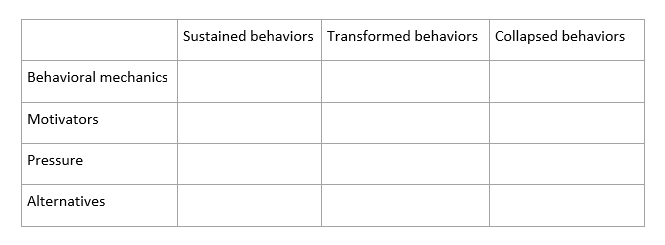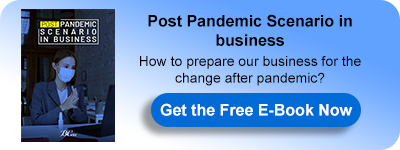How to Plan Your Business for the Post-Pandemic Era
It was evident that during the pandemic conventional strategic thinking wasn’t effective to help businesses adapt to the ongoing crisis. The businesses that survived had to introduce deeper thoughts from social science and innovation theory, along with the traditional business strategies.
When planning for the future, after the crisis is over, every business needs to be able to identify three pivotal factors:
a) Because of the drastic changes that happened in the market, every business will have to re-identify their most essential money-generating product. Many businesses had to explore better ways to generate money, some of them even had to offer new services that did not exist before. Businesses will need to revisit their whole supply flow to cope with the new norm.
b) Your business model will also be affected by the behavior of your most important stakeholders. Your suppliers may have changed their business models. If you have investors, your capital may be affected by any mindset changes they may have.
c) The most critical factor will be related to your consumers. Can you anticipate the behavioral changes of your consumers after the pandemic? Answering this question may be the most difficult task that you will have to address to properly plan for your post-crisis strategy.
It is expected that major behavioral shifts have affected your consumers. When everything settles down, some things will go back to their pre-pandemic normal, some things will be drastically altered, and some things will most likely never be the same again. You will have a better plan if you identify which is which.
Accordingly, there are three categories of consumer behavior that we can evaluate:
•Sustained (which are the behaviors that are expected to return as before the crisis): e.g., people are expected to get back on vacations as soon as the situation feels safer, hence the travel business will get back to its previous demand.
•Transformed (which are expected to return but with fundamental changes): e.g., entertainment theatres will have to ensure their customers that they are following strict hygienic standards.
•Collapsed (which will never be picked up back again): e.g., some companies will rely more on e-commerce and long-distance customer support, rather than having a physical existence.
Although it is impossible to give a hundred percent accurate prediction, social sciences and economics may help us formulate reasonable estimations to outline behavioral changes.
To do this we can discuss the following four factors:
1. Mechanics (the mechanics of the consumer behavior): is it a routine/habit? If this behavior is part of the consumer’s routine, it will most likely be sustained after the pandemic is over.
2. Motivators: Was the consumer behavior driven by psychological motives or financial/promotional incentives? You will need to thoroughly study the significance of your products to your consumer’s behaviors. Psychological research has long proven that emotional rewards can be far more impactful than monetary returns. If the consumers are using your services because of attractive financial value, they may still revert to a slightly more expensive service provider if they provide a stimulating social experience.
3. Pressures: was the behavior a result of a certain pressure? Humans are inherently attracted to what is popular. They listen to each other and they evaluate their behavior in comparison to their peers. You will need to study who is telling your consumers to behave this way; and will this effect be sustained after the pandemic is over?
4. Behavioral alternatives: how easy it is for consumers to use newer technologies. You may be offering a high-end service, but one competitor may offer something similar, but on a fancier and easy-to-use platform. If you are shifting to a new system, you have to ease the transition for your consumers.
Now you will need to form a grid of questions:

You'll need to study your consumers (as well as other stakeholders; i.e., suppliers, delivery, etc.) one by one and answer those questions. Some will be easy to solve and predict future behaviors. Others will be too hard to answer. When faced with difficult questions, you may just envisage several outcomes to be prepared for all scenarios. Just put in place a plan for a certain factor when the behavior is sustained, transformed, or collapsed, so you are ready for all possibilities.
1Patnaik, D., de Mola, M. L., & Bates, B. (2021). Creating a Post Covid Business Plan. Retrieved from HBR. Accessed 25 March 2021, https://hbr.org/2021/01/creating-a-post-covid-business-plan
For more about this topic, download our latest book "Post Pandemic Scenario in business" for FREE:
